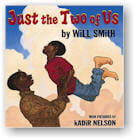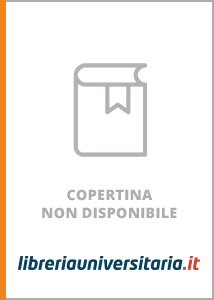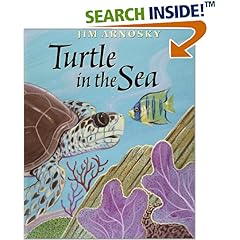
Nothing
Written and Illustrated by Jon Agee
Published by Hyperion Books for Children in NY in 2007
ISBN: 978-078683694-9
Genre: Picture Book
Award: Publisher's Weekly Best Children's Book, 2007
Reading Level: Grade 1
Activity Level: Grades 2, 4
Summary: This is a book about a woman who becomes obsessed with buying nothing, until she realizes that there are some things that she needs. One day, almost at closing time, a shopkeeper sees a very wealthy woman coming toward his store, when he tells her he has nothing to sell, she asks him how much he wants for it. Although perplexed, he sells her nothing for $300, which is the amount she offers to pay him. The shopkeepers, including Otis, could not believe what had happened! The next day the woman returns to buy more of nothing, but Otis refuses to sell her nothing, so she goes elsewhere. All of the other shopkeepers are very willing to sell her nothing and the townspeople are so intrigued by what the woman is doing, they begin looking for nothing to buy as well. They are so eager to have nothing that they throw all of their old things away to make room for it. These things eventually end up in Otis’ store. However, things change when the woman, Suzie Gump, takes a bath, but has no towel to dry off with, so she goes in search of something. She then buys everything in Otis’s store. When another man comes into his store at closing time that day as asks what is for sale, Otis pushes him away because he does not want the “nothing” frenzy to return to the town!
Response: I really like the humor in this book. The entire story is just full of it--from the insane idea of buying nothing to Otis pushing the final shopper out the door to alleviate the return of the town frenzy.
The illustrations in this book are very good. They are not detailed, but show just enough detail to be interesting. Nearly all of them are double-page spreads filled with bright and muted colors. Instead of making characters look exactly as people would look with details, he uses various shapes to make noses and faces that make each character look different, but not overdone.
Teaching Connections: A teacher could use this book in her second grade classroom. She could do the text talk lesson that I did. Here are the questions and answers for that lesson:
Teacher Comments and Questions:
Page 1: Antique means very old. So, what does it mean when it says that “Otis had just sold his last antique”? (That means that he had just sold his last very old item.)
Page 2: Baffled means surprised. So what does it mean when the book says that Otis was baffled when Suzie offered to buy “nothing?” (It means that he was surprised.)
What is going on in the story so far? (Suzie Gump has walked in Otis’ store at closing time and wanted to buy nothing from him, which is surprising to him.)
Page 3: Ridiculous means crazy or strange. So, what does it mean when it says that Otis thought buying nothing was ridiculous? (It means that he thought it was crazy.)
What did we just find out? (Suzie is excited about buying nothing because she has had many things, but she has never had nothing!)
Page 7: What is going on here? (Some other shopkeepers have just found out that Otis sold nothing to Suzie and she paid $300 for it. They were surprised because they had never heard of anyone buying nothing before and things like that “only happen in the movies.”)
Page 8: Now what is happening? (The other shopkeepers are very eager to sell “nothing” for money.)
Page 13: Frenzy means that there was a lot of commotion and chaos. So, what does it mean when the book says the town was in a frenzy? (It means that it was chaotic.)
What do we now know? (The whole town wants to and is buying nothing because Suzie finds it so appealing.)
Page 16: What did we just find out? (Everyone has thrown their old things away to make room for their new “nothing and everyone’s old “stuff” is now in Otis’ store.)
What is the big problem here? (The problem is that now everyone wants nothing, not something, so Otis will not be able to sell his things.)
Page 23: Oh, no! Now what has happened? (When Suzie wanted to get out of her bathtub, she realized that she did not even have a towel to dry off with, a bathrobe to put on, or a car to drive into town in, so she decided to walk to town.
Page 28: So, what is going on here? (Suzie just went to Otis’ shop and bought everything he had!)
Page 30: What just happened? (A customer walked into Otis’ store at closing time when he had nothing to sell and Otis pushed the customer out the door.)
Follow-Up Questions:
Why might Otis have pushed the gentleman who came into his store when it was empty back out the door? (He probably did this because he did not want another frenzy to begin in town again like the one that started because Suzie walked into his store when it was empty.)
Explain why you either agree or disagree with what the other shopkeepers did (trying their best to sell to Suzie when they learned she wanted to buy nothing). (I do not think what they did was right because they took Suzie’s money and gave her nothing. Even though that is what she wanted, they should have known it was the wrong thing to do, like Otis did.)
Why did all of the townspeople do what Suzie did? (Because she was rich and they thought that since she was rich, she might have seen an opportunity somewhere that they might miss if they did not do as she did.)
Vocabulary Lesson:
Antique:
The book said “Otis had just sold his last antique.” An antique is something that is very old. Say antique.
Which of the following are antiques?
§ A car from 1908 or a book bag you have had for one year? (The car.)
§ Your great-great grandmother’s earrings or the bike you got for your last birthday. (The earrings.)
§ Your new basketball or your great-grandmother’s necklace?
Baffled:
The book says Otis was baffled by Suzie Gump’s decision to buy nothing. Baffled means surprised. Say baffled.
§ What is the difference between being baffled and understanding? (Those words are antonyms; they mean the opposite of one another.)
§ What is the difference between being baffled and knowing information about something? (Those words are antonyms too!)
§ Is there a difference between being baffled and being confused? (No; those words are synonyms; they mean the same thing.)
Ridiculous:
The book said that Otis thought buying nothing was ridiculous. Ridiculous means crazy or strange. Say ridiculous.
§ What things, words, or situations do you think of when you think of something as being ridiculous? (I think of a cow on the roof of my house and the words crazy and strange.)
Frenzy:
The book said that the town was in a frenzy. Frenzy means there is a lot of commotion or chaos. Say frenzy.
§ Describe a time when you would see a frenzy. (You could see a frenzy of people if you go shopping the day after Thanksgiving.)
Vocabulary Review: antique, baffled, ridiculous, and frenzy
§ Which is an antique: The chair your grandfather was rocked in when he was little, or your ipod? (Chair)
§ Would you be baffled if I came to class with orange hair or if you had lunch in the cafeteria today? (Orange hair.)
§ Would you think it was ridiculous to put gas in a car or eat while standing on your head? (Eat while standing on your head.)
§ Do you think it would cause a frenzy if gas prices became $10.00 per gallon, or if the cafeteria began putting napkins on all the tables? (Gas prices.)
A teacher could also use this book with fourth graders. She could read it to them and then have each of them write their own similar "books" or just a few pages about the words "Something," "Everything," "Always," "Somewhere," etc.
What Students Learn: From this book and the activities, students can increase their vocabularies, hone their comprehension skills, and gain a better understanding of similar words such as something, everything, etc.
 Duck on a Bike
Duck on a Bike Duck on a Bike
Duck on a Bike



 Goldilocks and the Three Bears
Goldilocks and the Three Bears 










 My Truck is Stuck
My Truck is Stuck